The pace of advance of the Ukrainian Armed Forces and the enemy in terms of human losses and equipment (infographic)
Recently, the Russians' advance has accelerated, while their level of losses remains unchanged. We have analyzed how certain stages of the Russian-Ukrainian war correlate with the dynamics of territorial losses and gains, as well as the loss of armored vehicles. To do this, we used data from the DeepState and Oryx expert communities.
The graph below does not show the full scale of territorial gains and losses since the beginning of the war, so it seems that the enemy has gained a lot again. But if you show the entire war on such a graph, the horizontal line is almost flat since the end of 2022, and no changes are visible on a large scale. But if we look closer, we can see how the "tail" of the curve has gone up sharply. In this article, we will explain how various events affected the dynamics of the war and show the moment after which the Russians were able to advance faster.
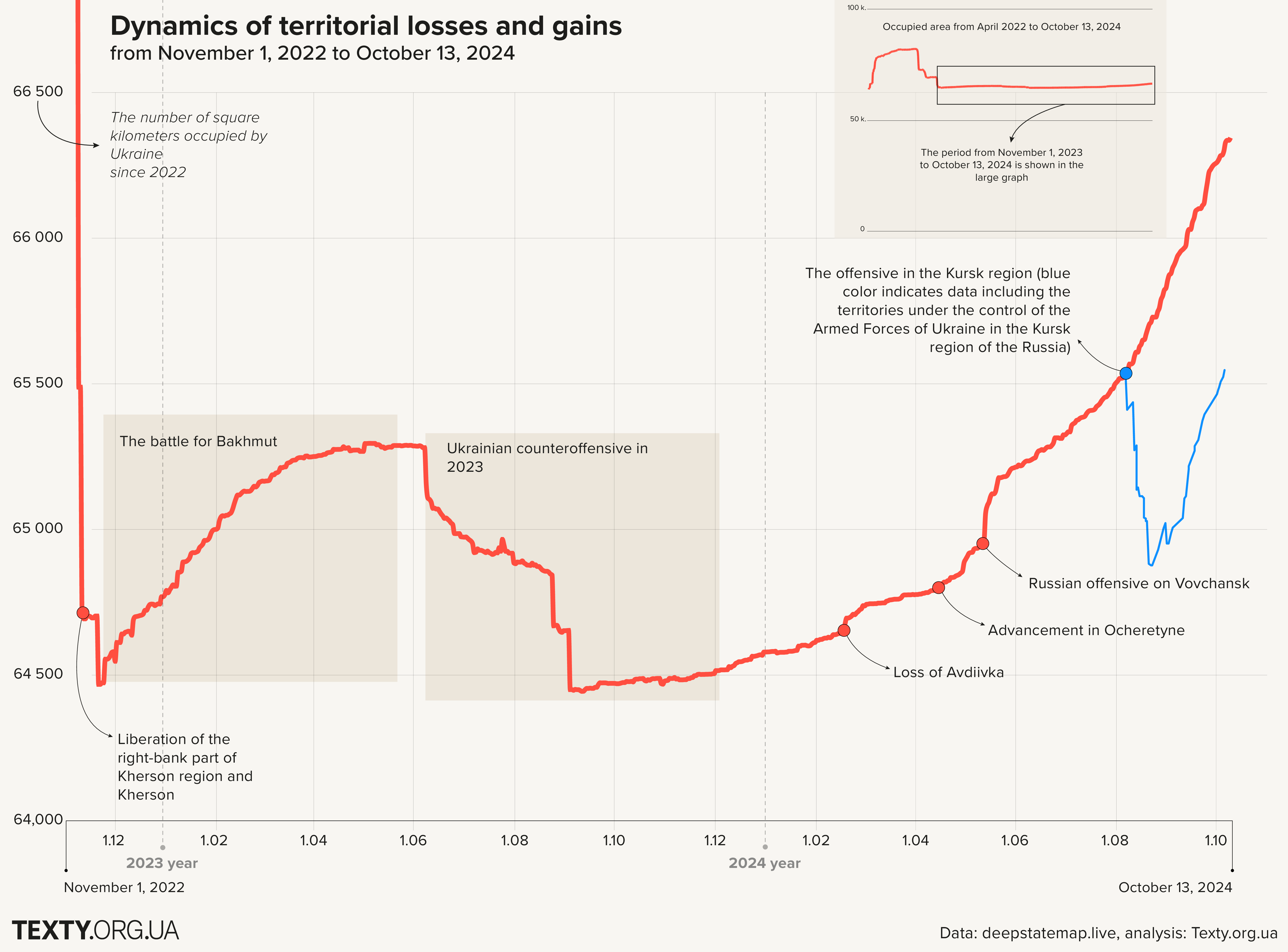
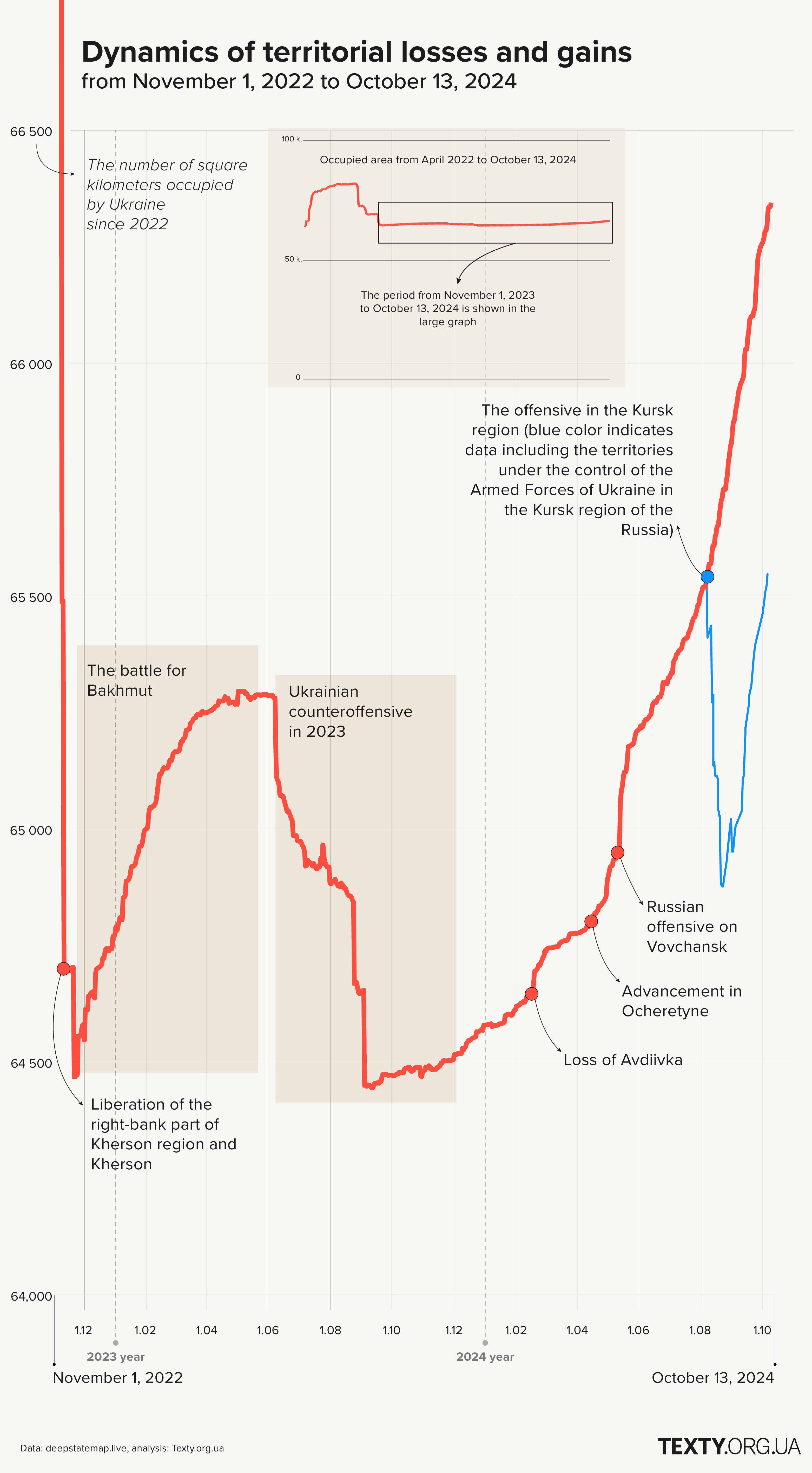
There are several key stages in this timeline.
Liberation of the right-bank part of Kherson region and Kherson. At the end of August 2022, Ukrainian troops launched an offensive on the right bank of the Kherson region and drove the Russians from the right bank of the Dnipro River. On November 11, the Armed Forces of Ukraine triumphantly entered Kherson.
At the same time, our troops were advancing in the Kharkiv region. On September 12, we liberated 6,000 square kilometers, almost the entire Kharkiv region.
But in December 2022, the Russians began to move west again. The situation is getting more complicated in the directions of Kupiansk, Lyman, Bakhmut, and Avdiivka. But it was Bakhmut that gradually became the place where Russian troops began to push through the Ukrainian defense.
The Battle of Bakhmut. It had been going on since August 2022, but by the end of the year, it had become particularly fierce. Wagner's "сannon folder" assaults allowed the enemy to advance along the city's flanks. In December 2022 and March 2023, Russian troops advanced from Lysychansk to Soledar. In January 2023, they captured the city, which significantly complicated the situation for the Ukrainian defenders of Bakhmut. On May 21, 2023, Ukrainian troops left the city after heavy street fighting.
The Ukrainian counteroffensive of 2023. This is another move by Ukrainian troops that can be seen very clearly in the graph. On June 7-8, 2023, the loud and long-announced counteroffensive of Ukrainian troops in the south begins. Despite significant losses, the Armed Forces managed to slowly "gnaw" their way through. Ukrainian troops liberate a number of villages in the Zaporizhzhia and Donetsk regions.
In September 2023, Ukrainian forces began running out of steam while the Russians advanced in several directions simultaneously. One of them is Avdiivka, a very well-fortified area that was hit by enemy assaults during the active phase of the ATO and withstood a full-scale invasion.
In October, the outlines of Avdiivka's future loss began to emerge as the enemy increased its presence on the city's defense flanks.
In January and the first half of February 2023, the Russians tried to attack at different points, with minimal success, and from time to time, the Ukrainian Armed Forces counterattacked. However, the enemy continued a very slow but systematic advance in the Avdiivka area.
The loss of Avdiivka. It took them a year. In the second decade of February 2024, the graph shows a slight jump in the curve, indicating an increase in the occupied territory. Behind this not-so-subtle change is a very important event - the loss of Avdiivka. On February 17, it became known that the Ukrainian Armed Forces would leave the city.
In the future, the Russians will attack in different directions, but they will advance the fastest in Avdiivka. However, the expectation that the enemy would run out of breath after capturing Avdiivka and take a long pause did not materialize. The Russian offensive continued.
Advances in Ocheretyne. On April 15, 2024, there were reports of Russian advances in Ocheretyne. The AFU failed to stabilize the situation. The enemy expanded its presence in this settlement, eventually occupying it and then neighboring settlements. The pace of occupation of Ukrainian territory by the occupiers began to increase.
Russian offensive on Vovchansk. On May 11-12, 2024, the Russians began their offensive near Vovchansk. The obvious goal is to stretch the Ukrainian forces, but the "rise" of the curve in the graph shows that some territories have been captured. After some time, the Ukrainian Armed Forces stabilized the situation in this area, and the curve ended.
Ukrainian offensive in the Kursk region. On August 6, 2024, Ukrainian troops rapidly entered the Kursk region. In just a few days, our units occupied hundreds of square kilometers of enemy territory. The loss of Russian land is highlighted in blue on the graph.
However, as can be seen from the same graph, the Ukrainian Armed Forces offensive in Kursk had little effect on the Russian offensive pace in other parts of the front. This has had almost no impact on the graph showing the expansion of the Russian occupation of Ukrainian territory. It continues its upward trend.
Russian losses and advances
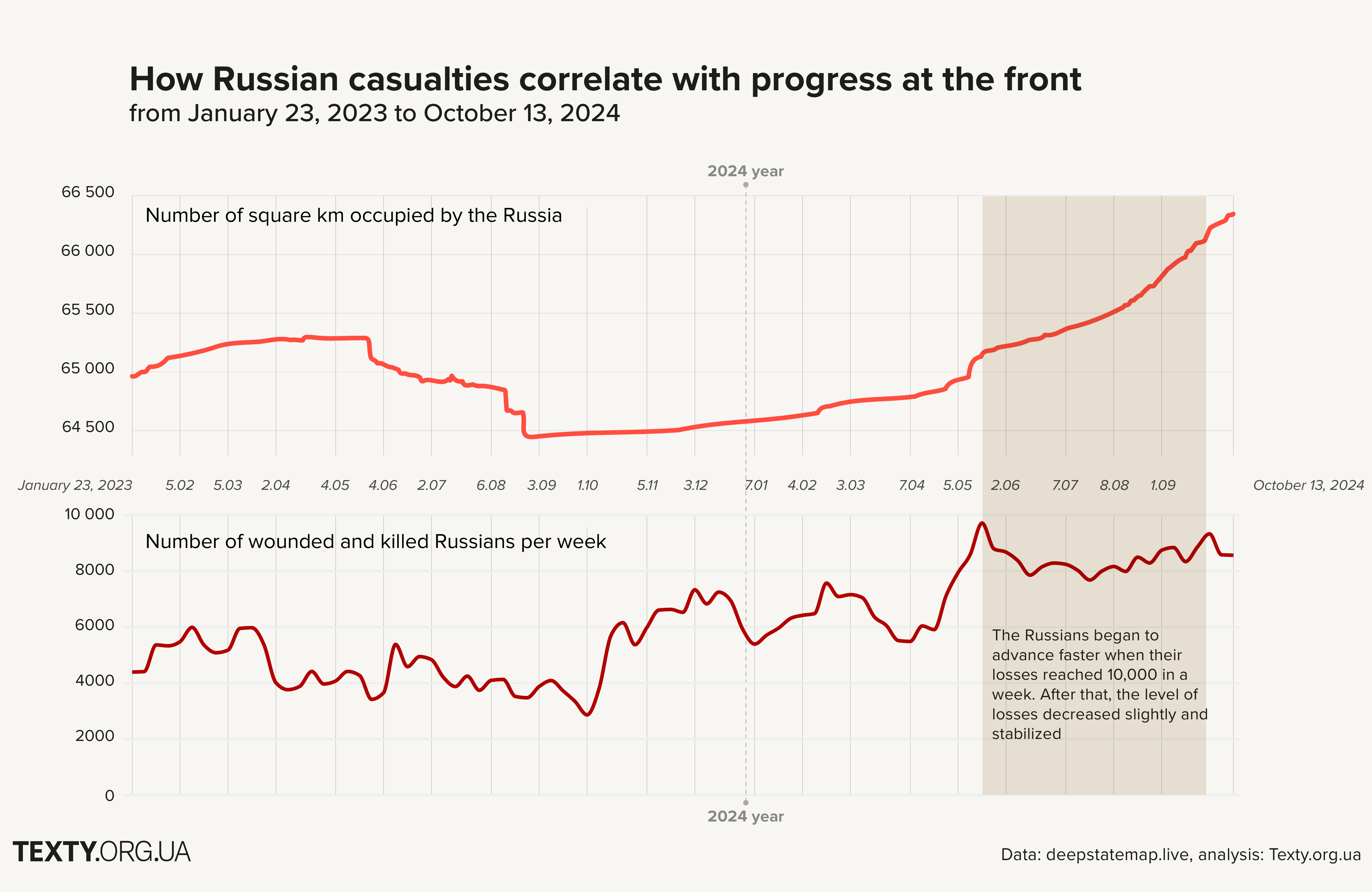
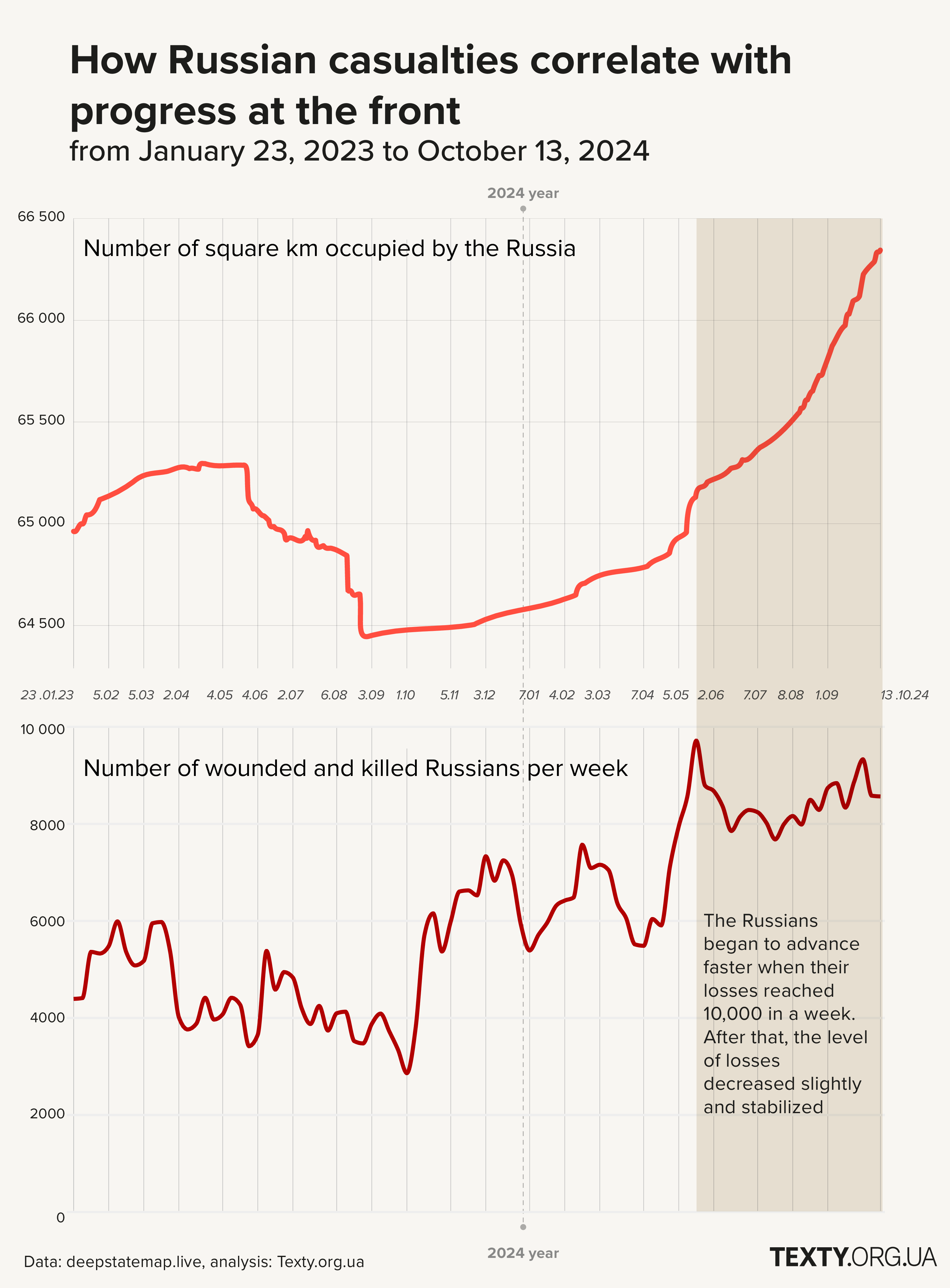
This graph clearly shows the correlation between the Russian advance and their losses. In fact, the first half of the graph shows moderate or even no enemy advance. Even so, the Russians' losses of human resources are quite noticeable. This is a good situation for us.
We see one of the peaks of human losses of the occupiers just before the retreat from Avdiivka. As a reminder, Ukrainian troops left Avdiivka on February 17. Obviously, the Russian leadership, disregarding the losses, drove its soldiers to storm the city.
According to reports, Russia is ready to lose 10,000 soldiers every week to continue the offensive
Then we see the maximum rate of occupation of Ukrainian territory by Russians and the "skyrocketing" of their losses in April. Then, the Russians advanced to Ocheretyne and started attacking in the Pokrovske direction.
The peaks in the rate of occupation and Russian losses here practically coincide and, despite a certain decline, continue to remain at a fairly high level.
In fact, Russia has begun to advance faster, suffering losses (killed and wounded of varying severity) of 10,000 every week.
Obviously, the Russian leadership is finally "hooked" on the formula of "heavy human losses in exchange for territory." But, according to the data, they are ready to exchange. So, we have to change our tactics and command and control of the troops to destroy even more occupants and make the price unacceptable.
Armored vehicles
Ukrainian troops are always actively "frying" Russian equipment. This was especially noticeable in the first months of the full-scale invasion when Russian losses in equipment were simply off the charts.
The graph also makes it obvious that even without any significant advances, the Russians are constantly losing many times more armored vehicles than the Ukrainians. At the same time, the losses of the occupiers in some areas can be staggering.
Thus, according to one of the members of the community that continues the Oryx project, which tracks the loss of military equipment (the initiators of the project have generally stepped down from the project), the ratio of losses of the Russian and Ukrainian sides in the Pokrovsk sector in mid-October was 1877 units of Russian equipment against 363 units of Ukrainian equipment.
However, an offensive is an offensive, and during an offensive, the losses of Ukrainian troops in armored vehicles also increase. This can be seen in the graph during the counteroffensive of 2023 and the operation in the Kursk region in 2024.
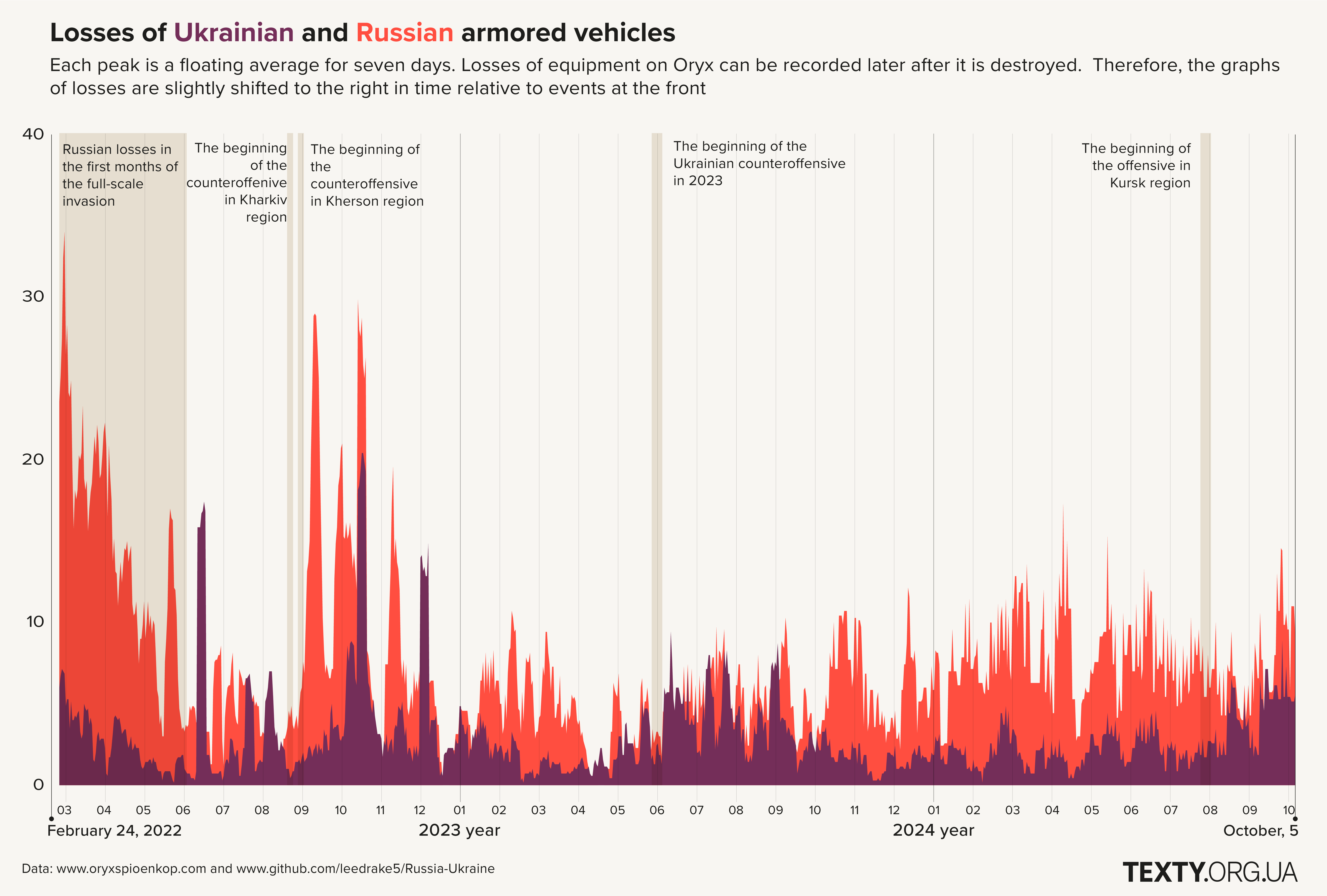
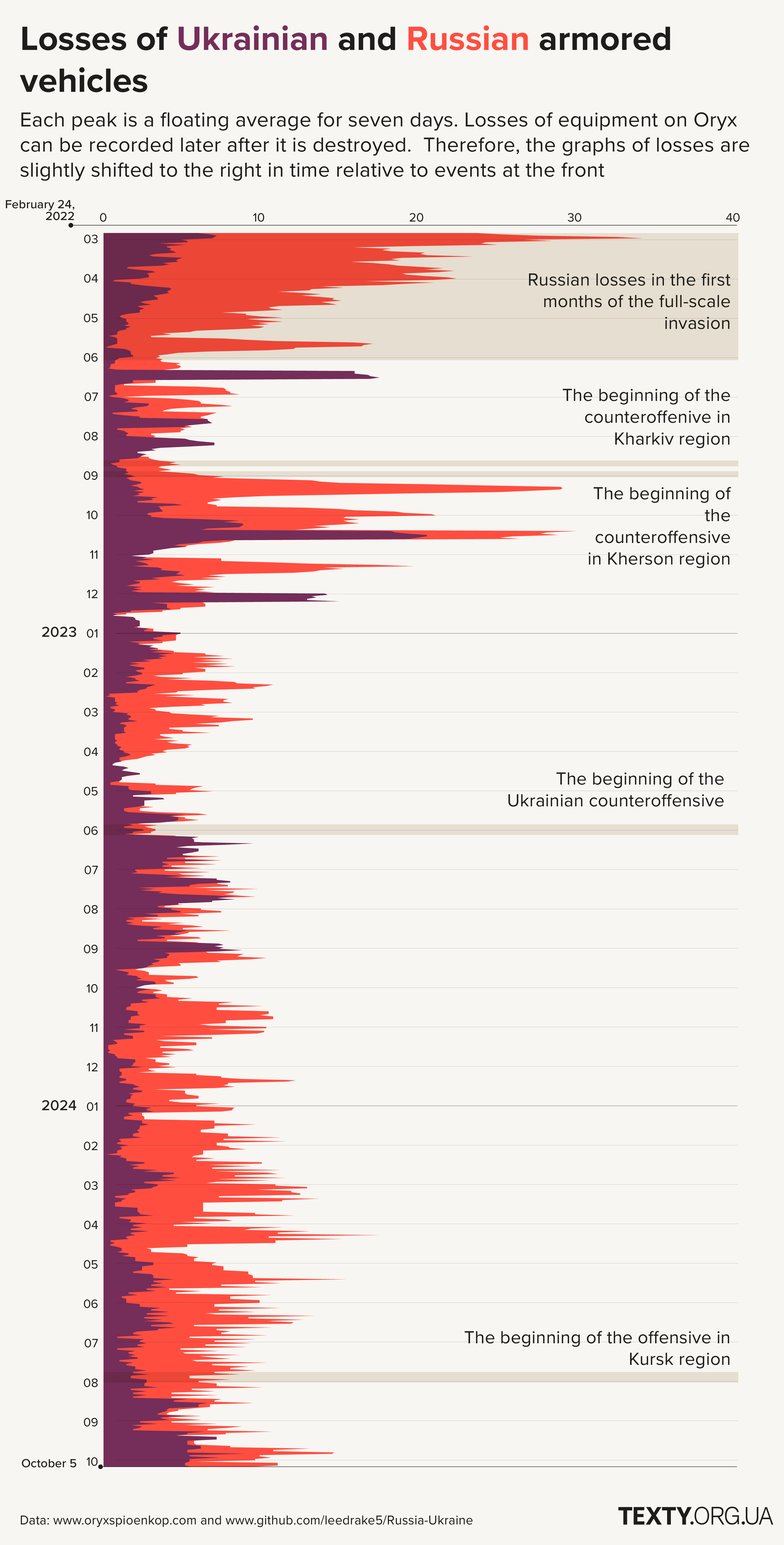
Interestingly, during the offensive of Ukrainian troops on the right bank of the Kherson and Kharkiv regions, the graph shows significant losses of Russian equipment. It is worth recalling that their defense failed and they retreated, leaving behind a large amount of their equipment.
It is also worth considering the specifics of Oryx data. The data on Oryx is updated not when a particular unit is destroyed, but when researchers see its photo. Often, more photos are uploaded to the network after the front line changes.
Artillery
The losses of artillery in the graph show the impact of the introduction of a new type of weapon.
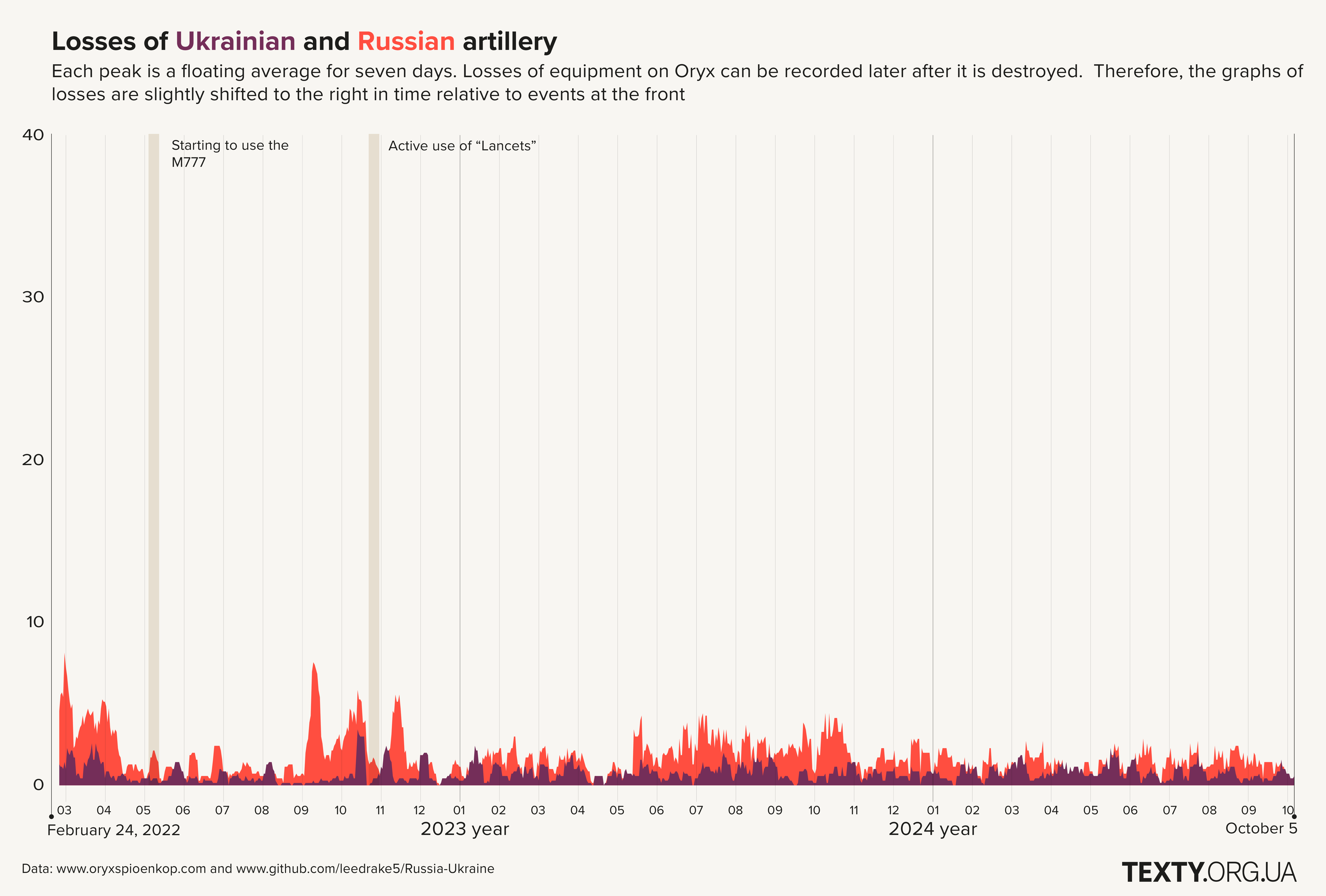
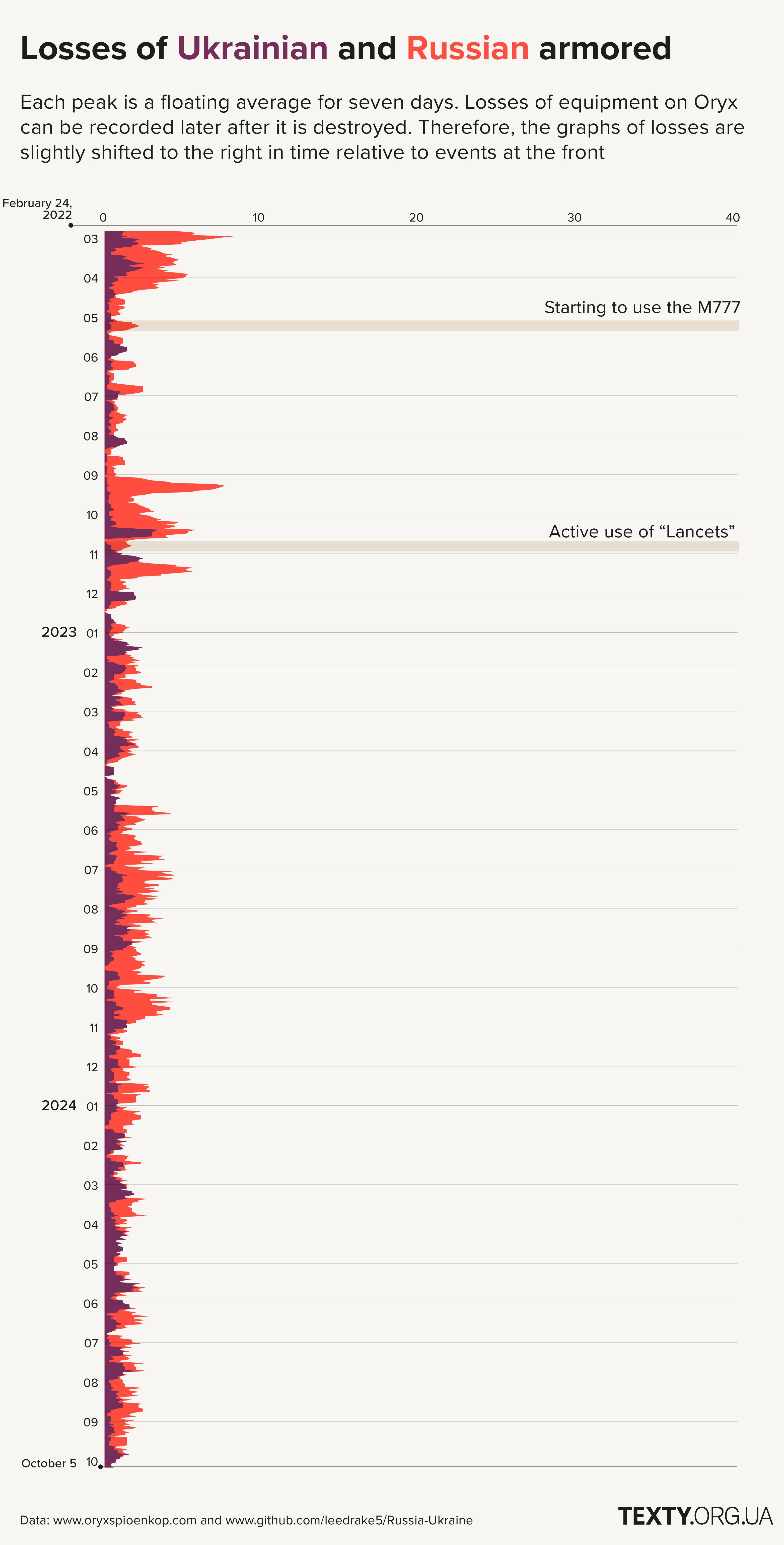
The beginning of the use of M777. Since the beginning of May 2022, there have been reports on social media about the use of American M777 (“three seven”) guns by Ukrainian troops.
Of course, the saturation of Ukrainian units with M777s did not happen immediately. But they played their role on the battlefield, as they proved to be more long-range, more powerful, and, most importantly, more accurate than their Russian counterparts.
Active use of "Lancets". In early November 2022, the Russians put their Lancet strike UAV into action. This somewhat changed the ratio of losses of Russian and Ukrainian artillery - the losses of towed and self-propelled Ukrainian artillery increased.
First of all, this concerned the famous American M777 guns, which were in the range of the Lancets. And most importantly, these drones proved to be much more accurate than Russian cannon artillery, which could mostly only work on “squares.”

